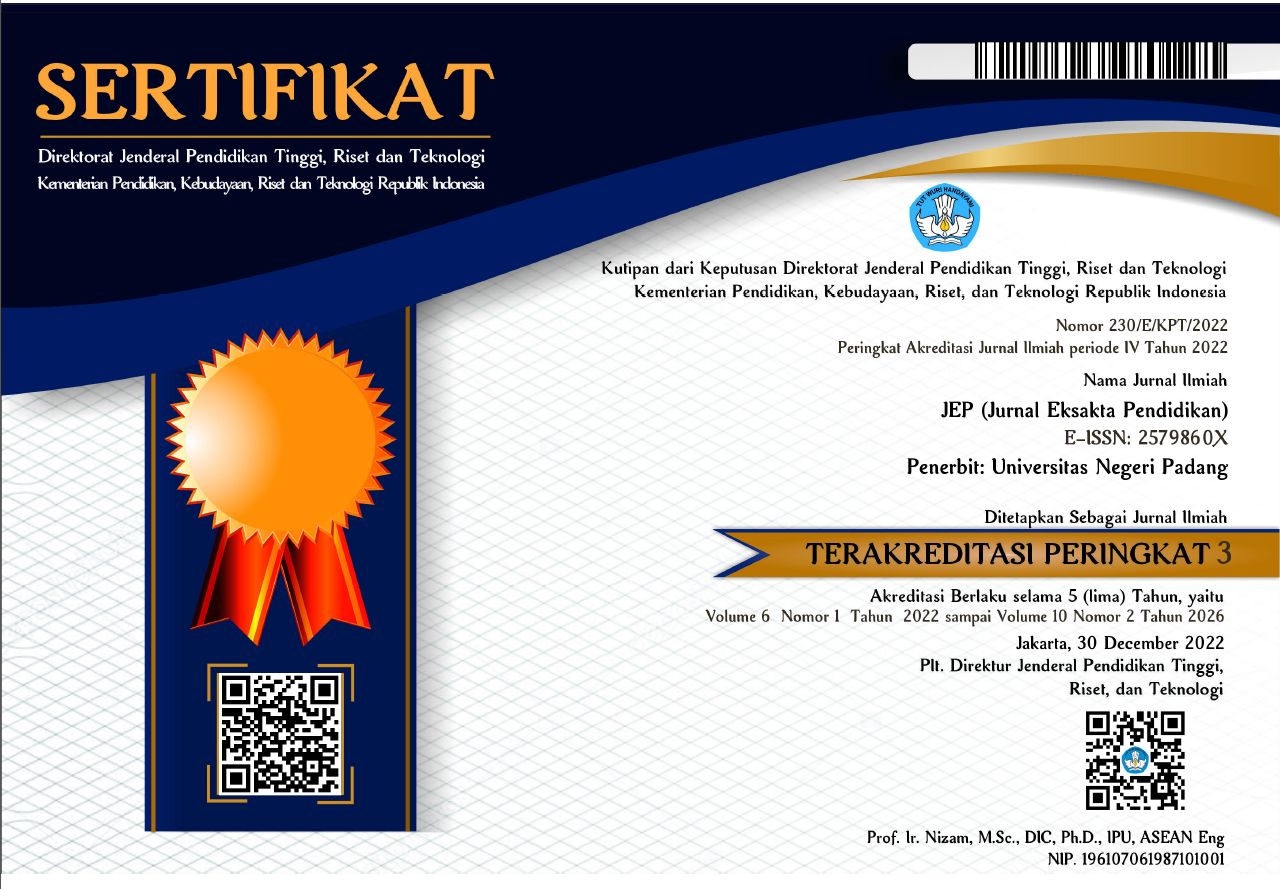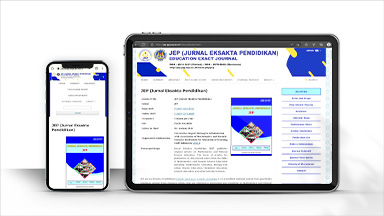Pemahaman Mahasiswa Terhadap Integral sebagai Anti Turunan, Suatu Desain Riset pada Kalkulus Integral
Abstract
The low learning outcomes and student’s difficulties in understanding calculus courses, espe-cially integral topic, encourage us as researcher to design a calculus lesson for first year students by using realistic mathematical approach (Realistic Mathematics Education). For that we try to design a series of instructional activities starting from understanding integral as an anti derivative. The in-structional activity is designed and developed based on the learning process that occurs in the class-room by involving 30 first year students in FMIPA UNP. The classroom learning compared with our Hypothetical Learning Trajectory (HLT). The results of teaching experiment show that students' un-derstanding of derivative plays important role in understanding the integrals, in general students have difficulty in communicating their ideas in determining the anti-derivative of a function. Through class-room discussions students can get ideas and discuss it in determining the anti-derivative of a function. Based on these results it is recommended to conduct classroom discussions to build students' under-standing in studying calculus especially integral as an anti derived.
Downloads
References
Edelson, D. C. 2002. Design Research: What we learn when we engage in design. Journal of the Learning Sciences, 11, 105 – 121.
Gravemeijer, and Cobb. P. 2006. Design Re-search From a Learning Design Per-spective. In J, Van Den Akker, K Gravemeijer, S, McKenney, & N. Niev-een(Eds.), Educational Design esearch (pp. 17 – 51). New York: Routledge.
Gravemeijer, K. 2004. Local Instruction The-ories as Means of Support for Teachers in Reform Mathematics Education. Utrecht : Freudenthatl Institute and De-partment of Educational Research Utrecht University
Mahir, N. 2009. Conceptual and procedural performance of undergraduate students in integration. International Journal of Mathematical Education in Science and Technology, 40(2), 201-211. DOI:10.1080/0020 7390802213591.
Purcell & Valberg. (2010). Kalkulus dan Ge-ometri Analitik edisi ke-9. Erlangga.
Serhan, Derar. 2015. Students’ Understanding of the Definite Integral Concept. International Journal of Research in Education and Science, Volume 1, Issue 1, Winter 2015 ISSN: 2148-9955.
Tasman, F. (2017). Supporting Second Graders’ on Learning Multiplication. BahnhofstraBe 28, 66111 Saarbrucken, Germany: Lambert Academic Publishing.
Tasman, F., den Hertog, J., & Hartono, Y. (2011). Helping students acquainted with multiplication in rectangular model. IndoMS J.M.E, 2(2), 185–198.
Tim UNP. 2015. Buku Panduan Akademik Universitas Negeri Padang. UNP Press.
Zakaria, Effandi. 2014. Using Technology in Learning Integral Calculus. Mediterranean Journal of Social Sciences, Vol 6 No 5 S1, September 2015.

This work is licensed under a Creative Commons Attribution 4.0 International License.




_(2579-860X).png)
_(2614-1221)1.png)




